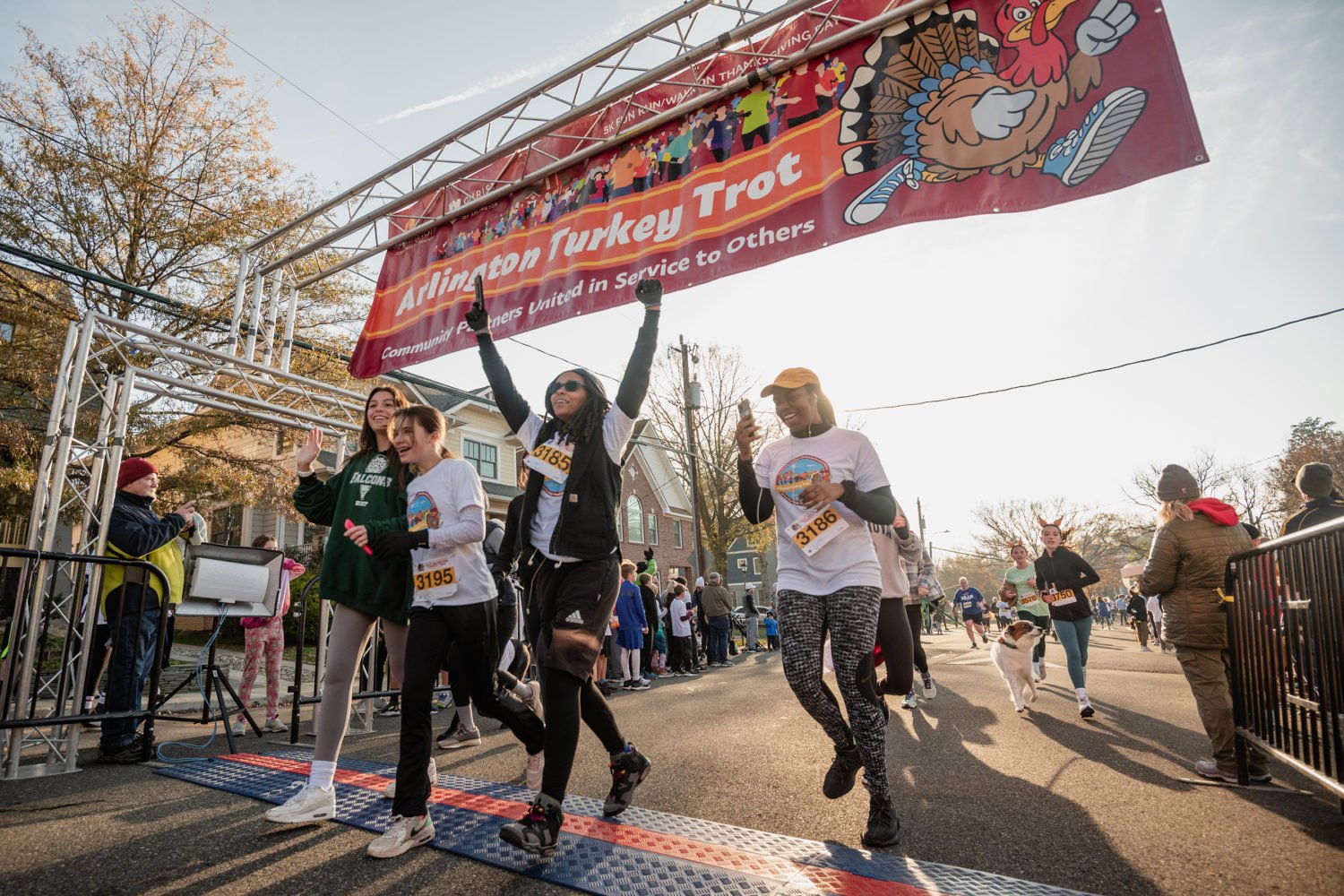With the Rock n’ Roll Half-Marathon and Cherry Blossom races just around the corner, there are lots of DC-area road races on the horizon. If you’ve signed up for a race this spring or are considering committing to one soon, we gathered some tips from two local running coaches on how to make the most of your training.
Sam Sharp is the head cross country and track & field coach at Wakefield High School. He’s also a USATF Level 2 certified endurance events coach and offers private coaching through Run Sharper. Erik Price is a coach with DC Capital Striders and is a Road Runners Club of America Certified coach.
Start slow and steady
For newer runners, Sharp recommends starting at a low mileage at a conversational pace. Newer runners should start at a lower volume and a lower intensity to ease into training and avoid injury. “They need to keep the pace light, and they need to be careful about increases in their training amount from one week to the next to make sure they’re not overdoing it,” Sharp says. He recommends increasing your mileage by only 10-15% each week.
Figure out how training fits into your life
If you’re following a training plan that requires four or more runs a week, it can be hard to structure that much workout time into your schedule. “If you are really passionate about it, try to get clever with it when you can make it happen,” Price says. Some people prefer early morning runs before work, while others prefer a jog in the evening. “I tried the early morning bit, and I was just a zombie all the time, so I usually go in the evening after my kids go to sleep,” Price says.
On the flip side, it’s important not to overtrain. “Remember to keep up with your non-fitness hobbies and friends,” Price says. To avoid overuse injuries, he adds, it’s important to remember that “more running is not always better, and if you are progressing nicely with your training be cautious about piling on more miles or squeezing in extra workouts and classes.”
Dress correctly
With one of the warmest winters on record, it’s even easier to run outside in the DC area. But unseasonable temperatures can also make figuring out what to wear more fraught. Sharp recommends being “flexible,” understanding that as your run progresses, your body will warm up. “I try to tell people to dress to be slightly uncomfortable for the first mile of a run, and then chances are, you’ll feel a lot better and you won’t overheat,” he says.
If you can’t decide how many layers to bring, Sharp recommends planning out your route to allow for dropping layers: “If you drove to a trailhead, or if you’re doing work on the track, you can kind of ditch layers as you go or add things if you figured out you underdressed or overdressed.”
Find a community
There are tons of running clubs in the area. Price, who met his wife at a running group, says that “I think running groups by nature attract positive, outgoing people looking to improve themselves. And then secondly, runners do more than just run, so you’re going to meet people who might like to go out or be social.” Running with friends can also help make the training miles go by faster.
What if you’ve run before, but recently took some time off?
Don’t put the pedal to the metal right away. “People really need to be careful not to try to train like they were before they took a break, so they probably need a two-week period of getting back into the rhythm of things and checking how the body feels after runs,” Sharp says.
If everything feels good after that two-week period, Sharp says, runners can start varying the intensity of their runs—with some harder runs closer to your desired race-pace, and some easier runs to aid with recovery and building your aerobic base.
What about interval training?
Interval training involves repetitions at high intensity punctuated by rest periods. Sharp recommends it for runners training for every distance, but “the shorter the race, the faster and the more frequently you’ll do intervals.”
More experienced runners with 10-16 weeks of training ahead of them also can incorporate interval training. For marathon runners, interval training could mean running 2-3 miles at their 10-kilometer (10k) pace, while for 5k runners, this could be a track workout doing 1k at race pace with 200 meter jogs in between.
What about cross-training?
On bad weather days, indoor workout classes can be a great way to maintain fitness. They’re also good for staying mentally and physically fresh. “That’s probably your best way to maintain fitness without approaching a burnout of non-stop running around the year,” Price says. “But don’t forget: you get faster at running by running, not by cross-training.”
How do I beat those race-day jitters?
Sharp has coached some of his clients to practice the hill on Rock Creek Parkway before the Rock n’ Roll Half-Marathon, and encourages runners to “do some of their training on parts of the course, just so they can start to visualize what it’s going to be like on race day.”
He also recommends not letting nervousness disrupt your routine for the race. “Even if you have some butterflies in your stomach or you’re anxious in the morning, you still have to eat the breakfast that you normally would if you were feeling totally fine,” he says.
Once you’ve made it to the start line, Sharp says, try reflecting “on your training a little bit and just appreciate all the hard work you’ve put in and just know that that’s going to pay off come race time.” Once your start running, he adds, any remaining nerves will likely dissipate.
What if I’m considering trying out a new race?
Price, who has run over 50 ultra-marathons, is no stranger to extending himself. When he began thinking about his first marathon, he decided to do the Marine Corps 10k first—and then worked his way up. He recommends that people, “look inward, and decide if you’re ready for it or not. It can sound like a cool bucket list goal, but if it’s something you want to truly enjoy, take your time and be patient about it.”
What about recovery?
Don’t sleep on it! But do, of course, get ample sleep—it’s part of the recovery process, and that process is vital. “Physiologically speaking, you get ‘faster’ after your workout,” Price says. “Make sure you have a cool down routine, focus on eating plenty of healthy, nutrient dense foods, hydrate around the clock, and get enough sleep.” Prioritizing recovery can help make the next workout more enjoyable, too.
How do I make running fun?
Believe it or not, Sharp used to dislike running—until he started running middle distance and track and found that, “once you get over that initial hump, it’s incredibly enjoyable. And pushing yourself to improve is really fun.”
Price says that the key to enjoyment is to “try to cut through the hype, and train in a way that meets your goals and limitations.” He advises runners to be skeptical about videos and websites offering quick-fixes to drop minutes off their time. It’s better, he adds, to “focus on your enjoyment of the activity, and remember that training sporadically or ramping up too fast will more than likely result in injury.” If you’re injured, running definitely won’t be fun.


















